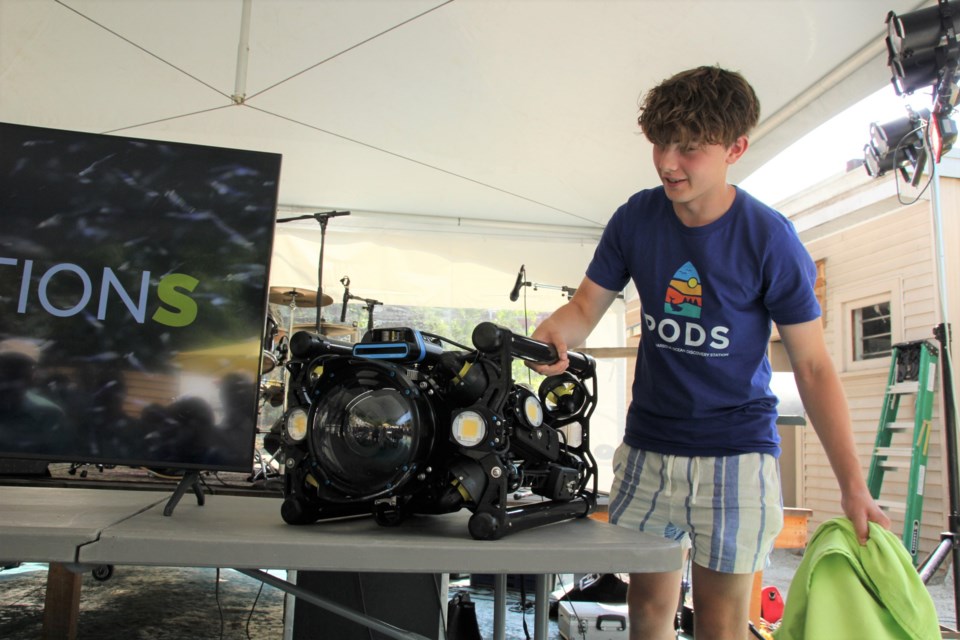As the Pender Harbour Ocean Discovery Station celebrated the official opening of its Tranquility Garden, it unveiled what the Loon Foundation’s executive director Michael Jackson called its “mystery machine.”
With the flourish of cloth, PODS introduced its new remote operated vehicle (ROV) that will be used for its underwater “XPODitionS.” The equipment comes with 11 boxes of attachments and cost “not far off” of $400,000, Jackson said. It was purchased by the Shuparski Family Foundation for PODS’s use.
Mark Wunsch, a marine biologist who will operate the machine, told Coast Reporter the ROV will gather footage and data for the Ocean Discovery Station’s future exhibits, including its 360-degree theatre.
“The name [of PODS] is the Discovery Station. So I said, we want to discover something,” Wunsch said. Eventually, the ROV will be connected to a live stream publicly available on social media.
“The idea is to open a window for the public to the deep ocean — not just what we know from the surface, from snorkeling, maybe diving, but to go beyond that,” Wunsch said. “There’s surprisingly a lot of life there, and very unusual critters… but there’s a lot of unknown and that information will hopefully enlighten people to the importance of the ocean.”
Since 2017, PODS has run 12 different monitoring programs. The data collected and analyzed will be featured online as part of a biodiversity database with interactive features. The XPODitionS programs with the ROV will take the research deeper — it can reach 500 metres below the surface. Wunsch operates the ROV from a boat on the surface with a control unit similar to that of a PlayStation. The ROV is attached to a three-millimetre cable, transmitting an echo picture, high-resolution footage, its GPS coordinates and data.
The high-resolution camera is the reason why they chose a model from New Zealand rather than Canada, Wunsch explained.
So far, the ROV has dived near Wunsch’s homebase of Quadra Island as well as the Discovery Islands and off the Sunshince Coast’s Agamemnon Channel and Nelson Island. It’s witnessed glass sponge reefs and humpback whales feeding on clouds of krill.
“Every dive is captivating,” he said.
Wunsch said they will also create an interactive map that the public can use to virtually explore the Coast. Part of the idea is to invite researchers to comment on what PODS finds and for students to propose uses of the ROV. Wunsch also hopes using the ROV will help support the development of marine protected areas and environmental mitigation, with the support of shíshálh Nation.
Jackson told the crowd there will be a naming competition for the ROV, with details to come.
The Tranquility Garden party on Aug. 27 featured musical performances, paint-by-numbers, hula hooping and a cheque presentation. The fundraising duo Cody and Megan Kelso joined Jackson on stage to present $1,500 from the Sunshine Coast Credit Unit, which will be used to put solar panels on the roof of the EarthFair store. The roof is also used to collect the rainwater used in the garden’s new fountain.
As for PODS, the finished construction drawings are anticipated to be ready by the end of December. The build, which will be the Coast’s first net-zero carbon mass timber building and built mostly off-site, is estimated to take 16 to 18 months.


